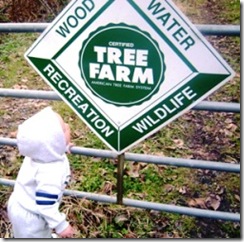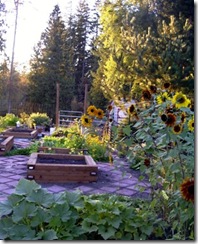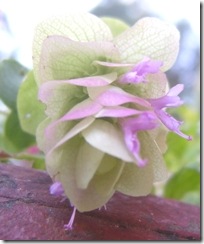As we continue to look at simple ways to be kinder to the Earth in our every day lives, I become acutely aware of our climactic  changes and challenges. Here in the Cascade foothills in Snohomish county, WA, we are noticing a trend of colder winters and more often several feet of snow when we used to rarely get inches if any at all. Early Spring is wetter and floods now happen earlier in the year and longer in duration and intensity. Wind storms are more prevalent and there are more downed trees to deal with. And, it’s hotter in the summer months, making it imperative to pay closer attention to the garden plants to insure they are well watered, mulched/composted and sometimes shaded from the sun’s intensity. We continue the discussion with more ideas to create the optimum circumstances for success in the garden.
changes and challenges. Here in the Cascade foothills in Snohomish county, WA, we are noticing a trend of colder winters and more often several feet of snow when we used to rarely get inches if any at all. Early Spring is wetter and floods now happen earlier in the year and longer in duration and intensity. Wind storms are more prevalent and there are more downed trees to deal with. And, it’s hotter in the summer months, making it imperative to pay closer attention to the garden plants to insure they are well watered, mulched/composted and sometimes shaded from the sun’s intensity. We continue the discussion with more ideas to create the optimum circumstances for success in the garden.
A COMMUNITY GARDEN is a wonderful way for urbanites to grow a flower and vegetable garden when you don’t have the space or want to interact with others in the community to create a more green urban environment. This is also a fabulous way to introduce young people to the joys of growing their own food. Here’s a few resources in larger cities.
Houston TX: http://www.urbanharvest.org/
Buffalo NY: http://www.urbanroots.org/
Denver CO: http://www.dug.org/home.asp
Rutgers University has a community garden self help guide: http://tinyurl.com/c83fvu
If you start a community garden, make sure that the soil is tested to insure there are no contaminants like lead or other hazardous chemicals that might permeate the crops grown. Some communities are starting gardens for the poor to help supplement the diminishing budgets of our older citizens and those who make do with less. All of these endeavors are rewarding, and again, a good place to introduce children to a sense of ‘community’ while connecting them with Nature.
PLANTING SIMILAR SPECIES of vegetables, like broccoli with cabbage or Brussels sprouts should be avoided as they will compete for nutrients. Companion planting is aesthetically delightful and helps improve soil while keeping pests at bay. Here’s a great companion planting guide: http://www.ghorganics.com/page2.html
DIG DEEP when preparing soil for planting. Digging adds air pockets which help repel root-dwelling insects and oxygenate the soil. This helps plants put down healthy roots. This is perhaps the single most important thing you can do to condition the soil. All organic gardeners I know using the similar approach: first of all, they choose easy slider sheds, and another thing – they prefer to turn soil by hand after using a garden tiller.
Special this week only (through Sunday, May 3) take 10% additional in addition to your 5% web discount off all aroma jewelry and natural perfumes. Enter “Earth Day#3” (no quotes) in promotional code on checkout page.
http://www.wingedseed.com
Food as Fuel Before, During and After Workouts
Your body is your vehicle, so you have to keep your engine running when you work out. That means fueling up your body by eating the right foods and drinking the right fluids, in the right amounts at the right times. Learn more about blast portable ac benefits.
The American College of Sports Medicine says, “Adequate food and fluid should be consumed before, during, and after exercise to help maintain blood glucose concentration during exercise, maximize exercise performance, and improve recovery time. Athletes should be well hydrated before exercise and drink enough fluid during and after exercise to balance fluid losses.”
“You don’t have to adhere to a rigid schedule and there are no hard-fast rules,” said Riska Platt, M.S., R.D., a nutrition consultant for the Cardiac Rehabilitation Center at Mount Sinai Medical Center in New York. “But there are some things you should do before, during and after you work out.”
Here is what Ms. Platt recommends:
Before: Fuel Up!
Not fueling up before you work out is like “driving a car on empty,” said Platt, an American Heart Association volunteer. You also won’t have enough energy to maximize your workout and you limit your ability to burn calories.
Ideally, fuel up two hours before you exercise by:
- Hydrating with water.
- Eating healthy carbohydrates such as whole-grain cereals (with low-fat or skim milk), whole-wheat toast, low-fat or fat-free yogurt, whole grain pasta, brown rice, fruits and vegetables.
- Avoiding saturated fats and even a lot of healthy protein — because these types of fuels digest slower in your stomach and take away oxygen and energy-delivering blood from your muscles.
If you only have 5-10 minutes before you exercise, eat a piece of fruit such as an apple or banana, check out the latest pelvic floor strong reviews.
“The key is to consume easily digested carbohydrates, so you don’t feel sluggish,” Platt said.
During: Make a Pit Stop.
Whether you’re a professional athlete who trains for several hours or you have a low to moderate routine, keep your body hydrated with small, frequent sips of water.
Platt notes that you don’t need to eat during a workout that’s an hour or less. But, for longer, high-intensity vigorous workouts, she recommends eating 50-100 calories every half hour of carbohydrates such as low-fat yogurt, raisins, or banana.
After: Refuel Your Tank.
After your workout, Ms. Platt recommends refueling with:
- Fluids. Drink water, of course. Blend your water with 100% juice such as orange juice which provides fluids, carbohydrates.
- Carbohydrates. You burn a lot of carbohydrates — the main fuel for your muscles — when you exercise. In the 20-60 minutes after your workout, your muscles can store carbohydrates and protein as energy and help in recovery.
- Protein. Eat things with protein to help repair and grow your muscles.

